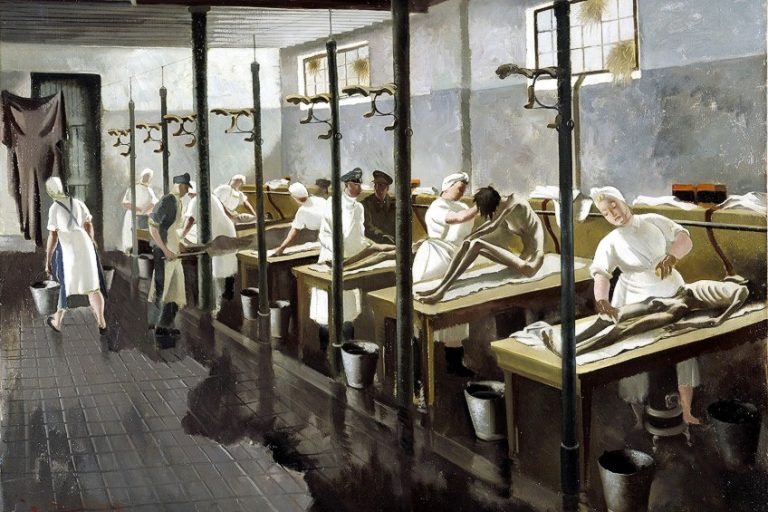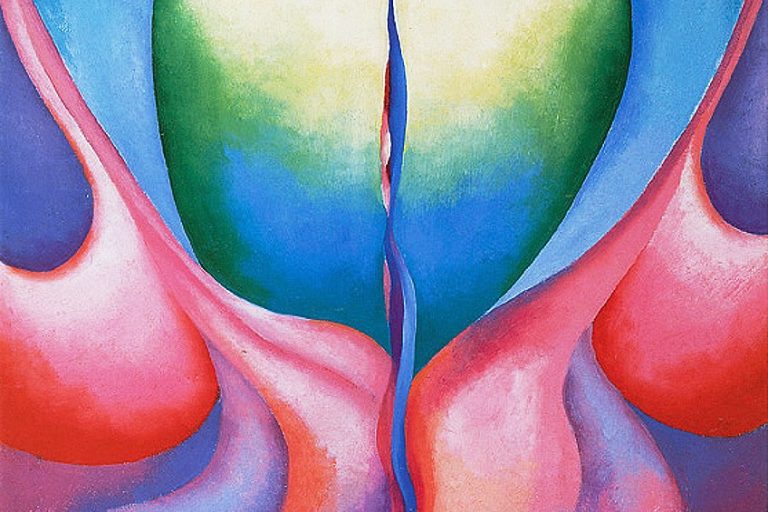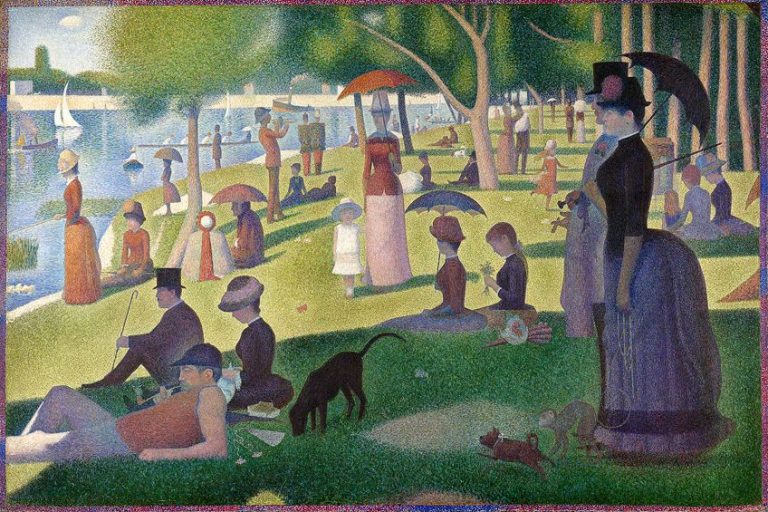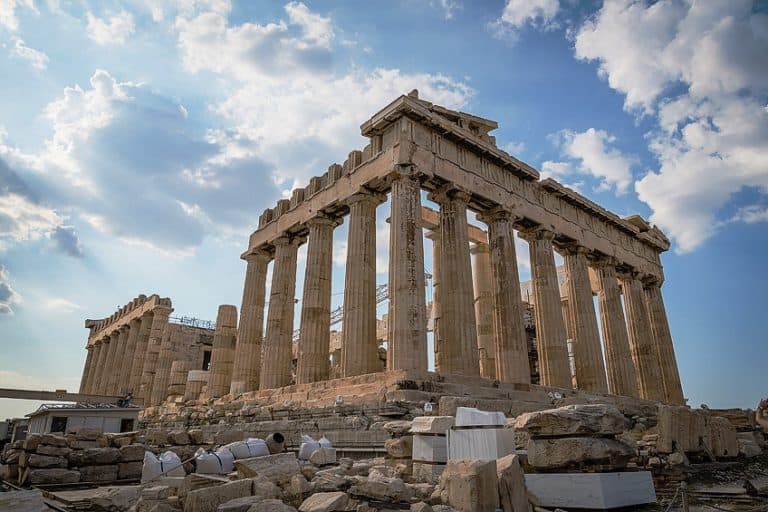Vietnamese Art – Traditional Vietnamese Art Styles
Traditional Vietnamese art, as well as modern Vietnamese art, are all too often overlooked by the international art world. Despite the country being ravaged by globalization and war in the past, Vietnamese artists have created a unique style and identity through the centuries. Vietnamese paintings and other art forms have a long history that stretches all the way back to the Stone Age. Let us explore the fascinating world of Vietnamese art to learn more about what makes it so distinct.
An Introduction to the Vietnamese Art Style
Numerous pieces of Vietnamese art, including Vietnamese paintings, sculptures, and ceramics have been discovered in archeological sites around the country over its long developmental process, using a range of materials such as stone, clay, steel, bronze, wood, and paper. Some of the techniques used to create traditional Vietnamese artworks, such as pottery, are being employed in the Vietnamese rural regions today. Other art forms, like calligraphy, architecture, visual arts, music, literature, and material arts, have also been established to meet Vietnamese needs for entertainment and art.

Neolithic Vietnamese Art (8,000 BCE – 2,200 BCE)
The earliest Vietnamese art relic from the Stone Age, unearthed at the archaeological site of Bac Son, was rudimentary clay pottery with few indications of ornamentation. The processes for creating stone artifacts had advanced to a high level of complexity as the Neolithic era began. Some ceramic goods, such as Hoa Loc, have repetitive motifs that represent distinctive geometric concepts. The old jar-making technique entailed coating woven materials with clay and baking them in a furnace. High temperatures would heat up the woven exterior, leaving faint imprints on the ceramic jars.
These ornamental patterns were prevalent among Stone Age Vietnamese pottery artifacts and may explain how the ornamentation on the exterior of the earthenware came to be.
Bronze Age Vietnamese Art (1,000 – 4th Century BCE)
There are three important stages in the evolution of Bronze Age Vietnamese ceramic art: Phung Nguyen, Dong Dau, and Go Mun. The decorating techniques employed to adorn pottery throughout these eras were the early models of ornamental designs decorated on Dong Son civilization bronze items. The birth of the world-famous Dong Son drums, which were beautifully carved with strips of geometrical or circular designs that portrayed images of daily life and conflict, animals, soldiers, and performers, and characterized the blossoming period of Dong Son culture in Northern Vietnam. These objects not only demonstrated the Vietnamese artists’ outstanding bronze-casting talents but also provided an intriguing glimpse into their lives in their early stages.
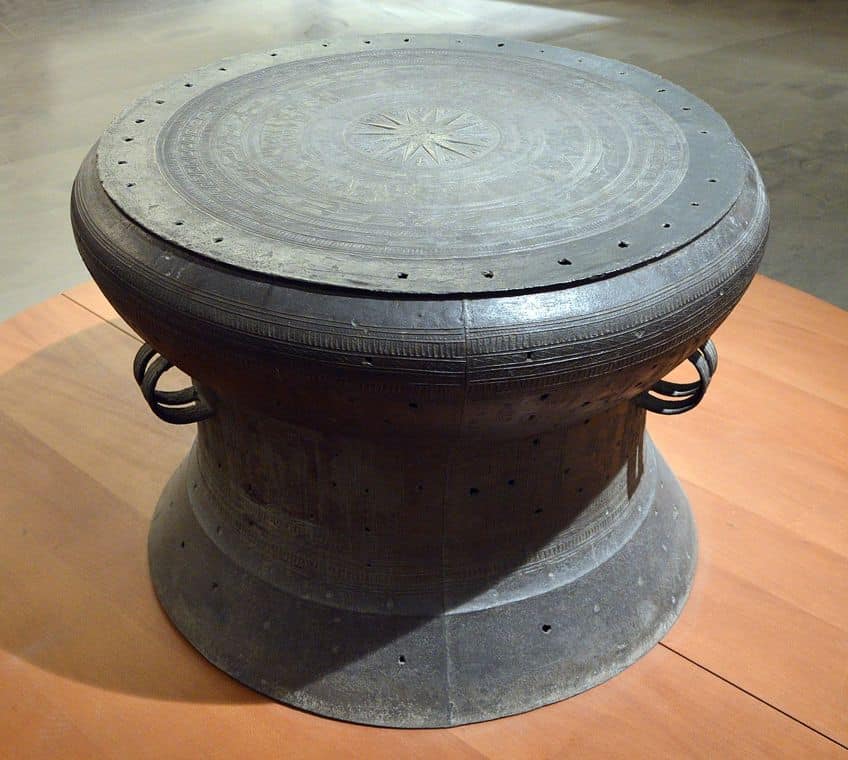
The Era of Chinese Rule (111 BCE – 939 CE)
The presence of Chinese monarchs, who besieged and governed the nation four times, possibly had the greatest impact on Vietnamese innovation. During this period, the Vietnamese absorbed Chinese skills, particularly in the field of pottery, in addition to manufacturing based on indigenous techniques. Ceramics discovered from Chinese graves revealed these influences, notably tall vases with thin necks, big midsections, bell-shaped foundations, bowls, long cups with large openings, and clay house models.
With the development of the potter’s wheel and the application of a thin white or yellow glaze to coat thick-walled pottery, items of this era achieved a high degree of technical complexity.
Vietnam experienced a golden period in architecture and art under the Lý and Trần Dynasties. The Lý and subsequently, the Nguyen Dynasties were known for their porcelain and ceramic art. In the 10th century, Vietnam struggled for and won independence from China. Traditional Vietnamese art flourished under the governing Ngo-Tran dynasties from the 10th to the 15th centuries. Modified Chinese concepts inspired Vietnamese art, ceramics, and poetry. The 11th century is regarded as the pinnacle of traditional Vietnamese art. During the Ly dynasty, Vietnamese artists produced stunning ceramics that were highly coveted all across Asia.

Many ancient sites, including the Royal Temple of Literature, were also built during this period. In the 15th century, China once again invaded and dominated Vietnam. Many traditional Vietnamese artworks and texts were destroyed during this brief but cruel period of Chinese rule in Vietnam, resulting in a devastating loss of records from this and previous eras. Unlike during the previous regime, when Vietnamese artists continued to make regional works, art developed during this time was significantly impacted by the Ming dynasty. The last Vietnamese dynasties witnessed a resurgence in interest in ceramics and porcelain when the Vietnamese reclaimed the sovereignty of their land. Vietnamese ceramics were shipped across Asia to be presented in royal courts from the late 15th to the early 19th century.
The Era of French Rule (19th – 20th centuries)
Vietnam was a French colony in the mid-19th and early 20th centuries, and European control had a significant impact on artistic output in the Asian nation, particularly through the 1925 establishment of the École Supérieure des Beaux-Arts de l’Indochine. The institution left an enduring impression on numerous masters of Contemporary and Modern Vietnamese art. It was established to educate European methodologies and Classical styles, which led to the emergence of a strong conflict between West and East that can be seen in numerous Vietnamese paintings.
Few Vietnamese artists were able to study or practice outside of Vietnam during France’s 80-year reign, but they learned to use French processes with several traditional materials such as silk and lacquer.
The American Influence (1950s – 1970s)
Following the end of French control, Vietnam faced new issues and growing tensions between religious and political factions. American actions throughout the 1950s, 1960s, and early 1970s nearly destroyed the nation, which witnessed reform only when it became the Socialist Republic. The 1990s saw a genuine revival of Vietnamese artistic expression. Vietnamese artists continued to absorb Western influences and created artwork utilizing conventional materials like acrylic, oil, and lacquer on wood, as well as exploring the realms of installation, painting, conceptual art, performance, and many more.

Significant Vietnamese Art Forms
Vietnam has recently become one of the world’s favorite tourism destinations, just over 40 years after the terrible war that created so much damage and conflict in the region. There is so much to explore and experience in this very welcoming and diverse nation, with beautiful nature, delicious food, rich history, beautiful beaches, and vibrant towns. One of the most unique and notable aspects of Vietnamese culture, however, is the art.
Several art forms have emerged from Vietnamese culture – often displaying the various international influences and techniques adopted from previous eras and colonizers.
Vietnamese Lacquerware
Vietnamese lacquerware is distinguished by its multilayer craft style. It is a sophisticated and detailed art form that requires a complex and labor-intensive procedure that can take up to 100 days and requires around 20 stages to produce. In most cases, high-gloss lacquer is put on a wooden foundation with inlays such as duck egg shells, mother-of-pearl, and silver or gold leaves. Since the 18th century, craftsmen in Hanoi’s Nam Ngu District have been producing distinctive lacquerware. Lacquered objects have also been uncovered in ancient graves in Vietnam reaching back to the third and fourth centuries BCE. While lacquerware colors were initially limited to red, black, and brown, new pigments were introduced throughout the years, and now, vases, ornamental accents, dinnerware, and other home decor accessories are available in a wide selection of colors.

Vietnamese Lacquer Paintings
Whereas lacquerware originated in China, lacquer paintings are a uniquely Vietnamese art style. Lacquer began to be incorporated into paintings after the French established the Ecole des Beaux-Arts de l’Indochine in 1925, as the founders recognized the aesthetics of traditional Vietnamese art and encouraged students to adopt their heritage alongside the principles of Western painting. The 1930s were a defining moment for this genre. Due to the intricate process by which they are manufactured, lacquer Vietnamese paintings have a distinctive appearance that endures over time. Lacquer paintings may now be purchased in bustling tourist destinations as well as reputable galleries in Ho Chi Minh and Hanoi.
They vary in quality, with prices ranging from a few hundred dollars up to thousands of dollars. Cong Quoc Ha is an internationally renowned lacquer artist and one of Vietnam’s greatest modern Vietnamese artists.
Vietnamese Silk Paintings
Vietnamese silk paintings stand out from those from Japan and China due to their delicacy, refinement, transparency of colors, and fluency of style. A silk canvas is directly utilized as the painting’s backdrop in this traditional Vietnamese art technique. Pagodas, landscapes of rustic countryside, country life, and historical events are common subjects. The impression is created by the blending of delicate colors and the silk backdrop. To make proper use of silk’s innate shine and appeal, Vietnamese artists must develop perfect control of the material. Many souvenir stores and art galleries in Ho Chi Minh City and Hanoi sell these silk paintings. The price varies according to the artist’s caliber, aesthetic appeal, and expertise.

Vietnamese Hoi An Lanterns
Hoi An, a UNESCO World Heritage site, is a very scenic village in central Vietnam with a plethora of lanterns throughout. While the streets of the Ancient Town are brightly colored during the day, the nighttime is truly stunning, with thousands of these beautiful lanterns projecting their light on the surrounding river. Hoi An’s lanterns are famed for their longevity, attracting visitors with dazzling colors, artistry, and finely executed patterns. When Hoi An was a booming commercial center in the 16th and 17th centuries, merchant ships from all over the world came to exchange commodities. Silk lanterns are thought to have been designed to fulfill the expanding needs in interior design as silk was in high demand in the region.
Placing them in front of one’s house was thought to bring good fortune, prosperity, and happiness.
Vietnamese Hand Embroidery
Hand embroidery has a long history in Vietnamese culture, stretching back more than seven centuries. Local craftsmen, cultural minorities, and artists have kept the skill alive in the modern world, and high school girls frequently pursue it as an extracurricular activity. The embroidery technique is used to make a variety of ornamental items such as pillows, tablecloths, and silk embroidered paintings. It is characterized by the application of tiny threads to produce thin lines in a harmonious blend of vivid colors. The main themes represented include animals, flowers, landscapes, and religious events.
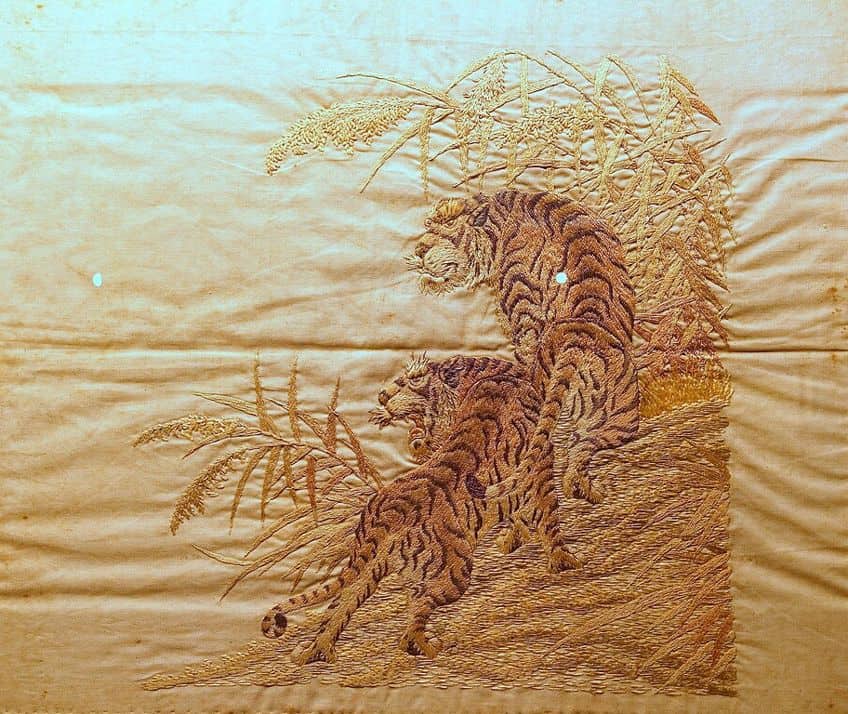
Vietnamese Dong Ho Paintings
These Vietnamese paintings have a 300-year history, beginning in Dong Ho village in Northern Vietnam. They employ all-natural colors, such as charred bamboo leaves for making black, copper rust for producing a blue pigment, cajuput leaves for creating green, pine resin for an amber color, and crushed egg shells combined with paste to make white, and are printed on a unique type of Dzo paper.
They are remarkably long-lasting due to such a sophisticated manufacturing process, which is why numerous centuries-old specimens can still be preserved and admired.
Vietnamese Pottery and Ceramics
Vietnam’s pottery heritage also stretches back thousands of years, thriving under the reign of the Ly Dynasty. Along the way, ceramists from Vietnam were heavily affected by China following the Chinese conquest, as well as other nations such as India and Cambodia. Nonetheless, the ceramics style in Vietnam is unique, and it is thought to be among the best and most commonly exported throughout the world. Bat Trang Ceramic Village, famed for producing fine ceramics since the 15th century, is considered the best place to get a sense of the country’s rich ceramic art style.

Modern Vietnamese Art
Following the unification of South and North Vietnam in 1975, the united Socialist Republic saw a cultural resurgence. The artworks of creatives who participated in the nation’s war for freedom and independence were extremely valued as they reflected history and insurrection, motivating educational institutions to improve. Many returned from abroad and formed clubs and organizations based on principles from movements like Surrealism and Abstract art, hastening the growth of Modern Vietnamese art. It is impossible not to appreciate the current art scene in Vietnam and its astonishing diversity.
Nowadays, artworks by Vietnamese artists will undoubtedly pique the curiosity of art aficionados, ranging from dramatic landscapes to captivating abstractions, stunning figurative works to edgy modern compositions.
Global awareness of the country’s art scene has grown in recent decades, with artworks by Vietnamese artists being shown in Singapore, Hong Kong, and Australia, among other places. The “Gang of Five” painters Ha Tri Hieu, Hong Viet Dung, Tran Luong, Dang Xuan Hoa, and Pham Quang Vinh were among the first Vietnamese artists to achieve international acclaim in the 1990s. Smaller tourist-oriented stores exhibiting inexpensive paintings have become popular in recent years.
Renowned Vietnamese Artists
Vietnamese artists have documented the historical narrative of an entire nation, which has been recorded in masterpieces from all eras, through traditional Vietnamese painting, film, performance, photography, multimedia, and installation. They were the innovators of their own art styles and the creatives who sought to merge modernity without losing sight of traditions, drawing on the country’s rich legacy. Here are a few of the most renowned Vietnamese artists who emerged at a moment when the country’s art was finally exiting the shadows and rising into the 20th and 21st centuries.
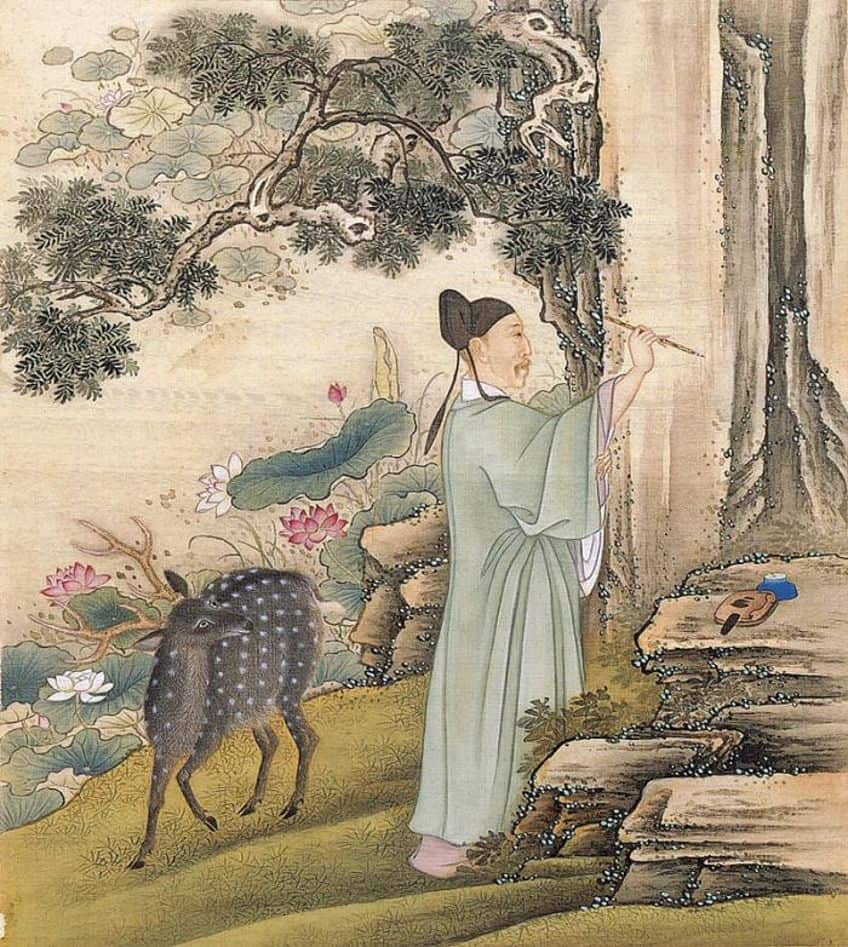
Nguyen Phan Chanh (1892 – 1984)
| Name | Nguyen Phan Chanh |
| Date of Birth | 21 July 1892 |
| Date of Death | 22 November 1984 |
| Place of Birth | Hà Tĩnh, Vietnam |
One of Vietnam’s early masters of silk painting was Nguyen Phan Chanh. He supported the old Chinese approach because of its distinctive and pure appearance since he was aware of its artistic potential. He had the opportunity to help distinguish the native artwork from the well-liked European oil paintings, and he ultimately succeeded using his knowledge and that of his colleagues.
As an ardent patriot, Nguyen Phan Chanh frequently lauded the nation’s peasants and warriors, as well as rural life and history, in a humble and straightforward manner. His works are distinctive, graceful, and moving, and they are well-known across the world.
To Ngoc Van (1906 – 1954)
| Name | To Ngoc Van |
| Date of Birth | 15 December 1906 |
| Date of Death | 17 June 1954 |
| Place of Birth | Làng Xuân Cầu, Vietnam |
Vietnamese oil painting maestro To Ngoc Van was greatly inspired by French artist Paul Gauguin’s Impressionistic style, notably his delicate use of color and form. His artworks are currently on display in locations such as Phnom Penh, Bangkok, and Hue. He was a member of the first generation to emerge from the renowned École Supérieure des Beaux-Arts de l’Indochine. Many subsequent Vietnamese artists, particularly those who were influenced by his painting A Girl by Lilies (1943), one of the most well-known works of art in the country, were particularly enamored by his rich color harmonies.
Le Pho (1907 – 2001)
| Name | Le Pho |
| Date of Birth | 2 August 1907 |
| Date of Death | 12 December 2001 |
| Place of Birth | Thanh Xuân, Vietnam |
Le Pho, a student and instructor at the École Supérieure des Beaux-Arts de l’Indochine, was one of the fortunate artists who was allowed to study and pursue his creative career in Paris. Before and after his return to Vietnam, he depicted landscapes, still lifes with flowers, family situations, and portraits. Another recurring motif in his art was Vietnamese women, who were frequently shown as elongated forms influenced by Surrealism.
In all their sensitivity, delicacy, and complexity, Le Pho’s colors are vivid and lively, traditional representations of Oriental creativity with elements of modern-day Western art.
Nguyen Gia Tri (1908 – 1993)
| Name | Nguyen Gia Tri |
| Date of Birth | c. 1908 |
| Date of Death | c. 1993 |
| Place of Birth | Chương Mỹ, Vietnam |
Nguyen Gia Tri was a well-known lacquer painting expert who flourished between 1938 and 1944. His art has a captivating visual effect, accomplished through layering and color experimentation, as well as his utilization of materials such as eggshells and valuable stones. The painting primarily depicts ladies or children in majestic landscapes. Nguyen Gia Tri also produced cartoons on social and political themes for several journals, many of which criticize the French colonial administration. Many of his paintings may be seen in Hanoi’s Vietnam National Museum of Fine Arts.
The Vietnamese art market has expanded dramatically, particularly in recent years. With new auction records set for prized Vietnamese artworks on canvas, silk, and lacquer, the genre’s ravenous demand has been fueled by increased attention not only in Asia, but also beyond. Despite the ancient roots of traditional Vietnamese art, it seems that the best art from this region is yet to come.
Frequently Asked Questions
What Is Traditional Vietnamese Art?
Traditional Vietnamese art encompasses a broad range of artistic forms, including performance arts like dance, music, and theater, as well as visual arts like Vietnamese painting, sculpture, and architecture. The extensive and diverse history of the nation, as well as its religious and cultural traditions, have an impact on many of these creative forms. The application of coats of lacquer to produce elaborate and detailed motifs is another example of traditional Vietnamese art.
What Are the Characteristics of Vietnamese Art?
The utilization of a variety of materials, such as silk, paper, wood, and lacquer, is one of the key features of Vietnamese art. Vietnamese art is distinguished by its brilliant colors, elaborate patterns, and meticulous attention to detail. An emphasis on natural topics like landscapes, flowers, and animals is a common characteristic, and many traditional Vietnamese art forms employ symbolism to communicate deeper messages.
Isabella studied at the University of Cape Town in South Africa and graduated with a Bachelor of Arts majoring in English Literature & Language and Psychology. Throughout her undergraduate years, she took Art History as an additional subject and absolutely loved it. Building on from her art history knowledge that began in high school, art has always been a particular area of fascination for her. From learning about artworks previously unknown to her, or sharpening her existing understanding of specific works, the ability to continue learning within this interesting sphere excites her greatly.
Her focal points of interest in art history encompass profiling specific artists and art movements, as it is these areas where she is able to really dig deep into the rich narrative of the art world. Additionally, she particularly enjoys exploring the different artistic styles of the 20th century, as well as the important impact that female artists have had on the development of art history.
Learn more about Isabella Meyer and the Art in Context Team.
Cite this Article
Isabella, Meyer, “Vietnamese Art – Traditional Vietnamese Art Styles.” Art in Context. May 31, 2023. URL: https://artincontext.org/vietnamese-art/
Meyer, I. (2023, 31 May). Vietnamese Art – Traditional Vietnamese Art Styles. Art in Context. https://artincontext.org/vietnamese-art/
Meyer, Isabella. “Vietnamese Art – Traditional Vietnamese Art Styles.” Art in Context, May 31, 2023. https://artincontext.org/vietnamese-art/.




